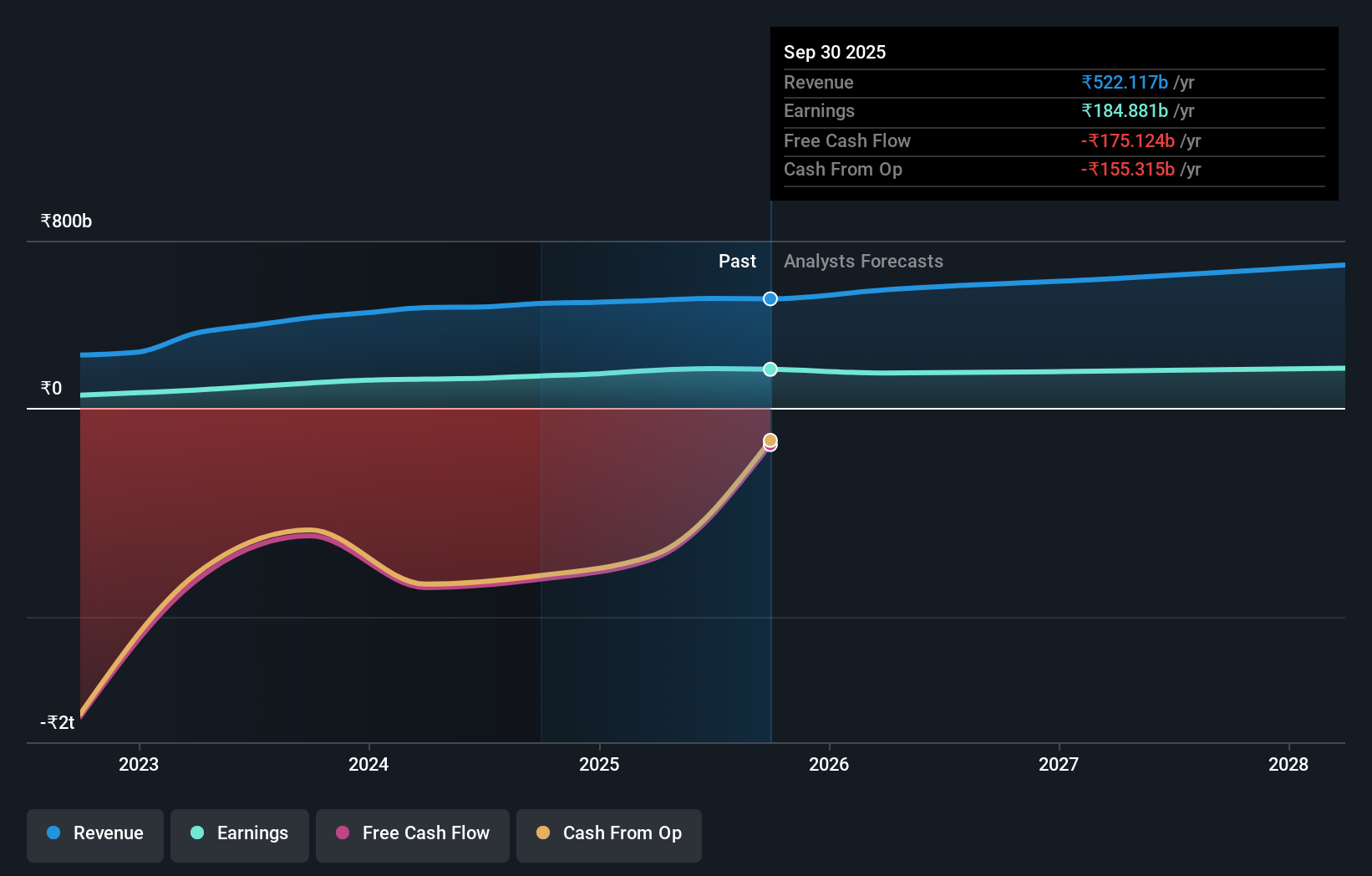Union Bank of India (NSE:UNIONBANK) surges 3.1%; state or government who own 75% shares profited along with institutions
Key Insights
- The considerable ownership by state or government in Union Bank of India indicates that they collectively have a greater say in management and business strategy
- 75% of the company is held by a single shareholder (The Republic of India)
- Institutional ownership in Union Bank of India is 14%
If you want to know who really controls Union Bank of India (NSE:UNIONBANK), then you'll have to look at the makeup of its share registry. And the group that holds the biggest piece of the pie are state or government with 75% ownership. That is, the group stands to benefit the most if the stock rises (or lose the most if there is a downturn).
While state or government were the group that reaped the most benefits after last week’s 3.1% price gain, institutions also received a 14% cut.
Let's delve deeper into each type of owner of Union Bank of India, beginning with the chart below.
View our latest analysis for Union Bank of India

What Does The Institutional Ownership Tell Us About Union Bank of India?
Institutional investors commonly compare their own returns to the returns of a commonly followed index. So they generally do consider buying larger companies that are included in the relevant benchmark index.
As you can see, institutional investors have a fair amount of stake in Union Bank of India. This suggests some credibility amongst professional investors. But we can't rely on that fact alone since institutions make bad investments sometimes, just like everyone does. When multiple institutions own a stock, there's always a risk that they are in a 'crowded trade'. When such a trade goes wrong, multiple parties may compete to sell stock fast. This risk is higher in a company without a history of growth. You can see Union Bank of India's historic earnings and revenue below, but keep in mind there's always more to the story.

We note that hedge funds don't have a meaningful investment in Union Bank of India. The Republic of India is currently the company's largest shareholder with 75% of shares outstanding. This implies that they have majority interest control of the future of the company. For context, the second largest shareholder holds about 6.4% of the shares outstanding, followed by an ownership of 1.3% by the third-largest shareholder.
While it makes sense to study institutional ownership data for a company, it also makes sense to study analyst sentiments to know which way the wind is blowing. Quite a few analysts cover the stock, so you could look into forecast growth quite easily.
Insider Ownership Of Union Bank of India
The definition of company insiders can be subjective and does vary between jurisdictions. Our data reflects individual insiders, capturing board members at the very least. The company management answer to the board and the latter should represent the interests of shareholders. Notably, sometimes top-level managers are on the board themselves.
Insider ownership is positive when it signals leadership are thinking like the true owners of the company. However, high insider ownership can also give immense power to a small group within the company. This can be negative in some circumstances.
Our information suggests that Union Bank of India insiders own under 1% of the company. Being so large, we would not expect insiders to own a large proportion of the stock. Collectively, they own ₹1.2m of stock. It is good to see board members owning shares, but it might be worth checking if those insiders have been buying.
General Public Ownership
With a 11% ownership, the general public, mostly comprising of individual investors, have some degree of sway over Union Bank of India. This size of ownership, while considerable, may not be enough to change company policy if the decision is not in sync with other large shareholders.
Next Steps:
While it is well worth considering the different groups that own a company, there are other factors that are even more important. Consider risks, for instance. Every company has them, and we've spotted 1 warning sign for Union Bank of India you should know about.
If you would prefer discover what analysts are predicting in terms of future growth, do not miss this free report on analyst forecasts.
NB: Figures in this article are calculated using data from the last twelve months, which refer to the 12-month period ending on the last date of the month the financial statement is dated. This may not be consistent with full year annual report figures.
New: AI Stock Screener & Alerts
Our new AI Stock Screener scans the market every day to uncover opportunities.
• Dividend Powerhouses (3%+ Yield)
• Undervalued Small Caps with Insider Buying
• High growth Tech and AI Companies
Or build your own from over 50 metrics.
Have feedback on this article? Concerned about the content? Get in touch with us directly. Alternatively, email editorial-team (at) simplywallst.com.
This article by Simply Wall St is general in nature. We provide commentary based on historical data and analyst forecasts only using an unbiased methodology and our articles are not intended to be financial advice. It does not constitute a recommendation to buy or sell any stock, and does not take account of your objectives, or your financial situation. We aim to bring you long-term focused analysis driven by fundamental data. Note that our analysis may not factor in the latest price-sensitive company announcements or qualitative material. Simply Wall St has no position in any stocks mentioned.
About NSEI:UNIONBANK
Proven track record with adequate balance sheet and pays a dividend.
Similar Companies
Market Insights
Community Narratives



